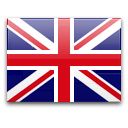The Batavia

The Batavia is a so-called ‘return ship’, better known as ‘East Indiaman’ in English. These ships were used by the Dutch East India Company for return journeys between the Netherlands and the Dutch colonies. She is famous for being shipwrecked on her maiden voyage in 1628/29 and the report written by captain Francisco Pelsaert: ‘Unfortunate Voyage of the ship Batavia’
East Indiamen did not just have a big load capacity, they were also capable of carrying passengers. They were three-masters, carrying square sails or a combination of square and staysails. The sprit often had a course and topsail. These ships were characterised by the galleon, which could measure up to one fifth of the total length of the ship. The spritsails were controlled from the galleon.
In 1614, the Dutch East India Company management divided their return ships into three classifications. The largest of these had a length of 150 ‘Rhineland’ feet (approx. 43 metres). In 1626 they agreed a new classification with a maximum length of 160 feet (approx. 46 meter) (vocsite.nl, 2015). To defend herself in combat, the ship carried 24 cannons.
The original Batavia was built on the Peperwerf in Amsterdam in 1628 and conformed to the new class 160 feet. She was lost on her first trip to what was then the Dutch East Indies on the coast of Australia. Remains of the Batavia and of the horrors shortly after decay can be seen in the Western Australian Museum in Fremantle, Australia.
The Duyfken

In 1605, on the initiative of the VOC, Jan Willemsz Verschoor set up an expedition ‘to discover the large country of Nova Guinea and other East- and Southlands’. For this he equipped the small yacht Duyfken (Little Dove). This yacht, also called a ‘pinas’, had been in service for a while now, and had proven exceptionally well suited to exploration, due to her shallow draft and good manoeuvrability. The Duyfken left the docks of Bantam under skipper Willem Jansz. and chief merchant Jan Lodewijksz van Rosingeyn in the following year, 1606. It landed in several places on the coast of the Southland, and eventually turned back to Bantam at approx. 13 degrees and 45 minutes latitude south due to lack of potable water. Jansz called this turning point ‘Keerweer’ (turnback), and it is called Cape Keerweer to this day. This first acquaintance with the new land was not encouraging, due to skirmishes with the native people, but it was the first European contact with a centuries-old land and its original inhabitants. In 1606, Australia was truly put on the map for the first time, as Nova Hollandia, by the crew of the small ship Duyfken.
Speel-jaght

At the end of 1622, the first marina was opened in Amsterdam, so the owners of pleasure yachts ‘would have a secure place to lay their yachts in an adequate way’. By now, the prosperity of the low countries had grown to such an extent that the richer class could afford yachts just for the pleasure of sailing.
These speel-jaghten or ‘play yachts’, as described by Nicolaes Witsen in his Architectura Navalis, were around 42 feet long and 9 feet, 4 inches wide, and were seen on Amsterdam’s waters in growing numbers. The entrance sign above a later marina spoke aptly: ‘Hier toonen d ‘Amstelaers, zeebouwers uyt der aert, Dat d ‘een zoowel uyt lust als daert uyt liefde vaert’. (Here the Amsterdam people, sea builders by nature, show that they sail both for love and pleasure).
Statenjacht

The 17th-century Statenjacht (Statenyacht) was - contrary to what the name yacht suggests - not a pleasure boat. Evolved from the war yachts as used in the 80-year war, it had developed into a convenient, fast and above all comfortable means of transport. The Statenjacht was the ideal way to travel at a time when country roads were bad and there was plenty of water. It was frequently used by high-ranking people and royalty, or official bodies such as the Amsterdam, Zuid-Holland and Zeeland Admiralties, but also by city councils and members of the VOC and WIC chambers.
The Statenjacht was a robustly built ship, suitable for sailing in all weathers on the waters of Zeeland and Zuid-Holland and on the Zuiderzee. If necessary, the ship was even seaworthy enough to sail into the North Sea. Because of the leeboards, the Statenjacht was able to navigate well in shallow water and brief trips along the coast.
State yachts were lavishly decorated with a beautifully carved mirror, various ornaments along the side and on the bow a grim lion that could compete with the large warships. However, it was only lightly armed with two or four small pieces - mainly intended for salute shots.
Willem Barentsz's expedition ship

Late August 1597: two small boats holding 12 exhausted men reach the Russian settlement of Kildin, which harbours 3 Dutch ships. On the 13th of June these men had left Nova Zembla, where they had had to spend the winter because their ship had been completely destroyed by pack ice.
In 1596 an expedition had been set up under the command of Willem Barentsz to find a passage through to the East via the north. Two earlier expeditions had been promising, and people were convinced that a Northern Passage had to exist. It would be more pleasant than the route past the Cape of Good Hope, and it would lack enemy ships. The expedition had set off in good spirits with three ships.
But now there were problems: biting cold, dangerous pack ice and ‘monstrous’ polar bears. Barentsz had discovered two new pieces of land – Veere Eiland (now Bear Island) and The New Land (now Spitsbergen) – but he was unable to go past Nova Zembla. The ship got completely stuck in pack ice, and out of its wreckage the crew built a settlement in which to spend the winter. Ship’s carpenter Gerrit de Veer wrote down the story of their journey and the winter spent in ‘Het Behouden Huys’ (The Saved House) on Nova Zembla.
Willem Barentsz never came home. Severely weakened, he died during the return journey, and he never found the Northern Passage. But his name lives on: the Barents Sea north of Russia was named after him, and he is considered to be one of the best known 16th-century sailors. The name of his ship, however, remains unknown to this day.
De Zeven Provinciën

"A ship that carries the fleet guardian fits that which is expensive and surpasses everyone" (Witsen).
Summer 1665. An imposing two-deck ship has just been launched and is now moored to be rigged and outfitted. Two private ship-builders are busy outfitting the ship, which has been ordered by the Admiralty of the Maze in Rotterdam. The name of the ship – third in a row with this name – has been known for a while, and the commander of this imposing war-ship has recently been named the Commander in Chief of the Dutch fleet.
Autumn 1665. Lieutenant-admiral Michiel Adriaenszoon de Ruyter is proud of his new flagship – De Zeven Provinciën. The Republic of the Seven United Netherlands, founded in 1579, lives in troubled times, and the tense situation with England in particular demands a strong ship and powerful leadership. The ship won’t be at fault. With a length of 163 feet (around 46 metres) from stern to bow it has a water displacement of 700 Dutch “last” (about 1400 tonnes). This makes the ship very stable in the water, even with full armament of 84 cannons and a crew of 420. All built-up knowledge and experience of the Dutch masters of shipbuilding has been combined into this ship. Her imposing appearance, with its heavily ornamented stern, will put fear into the hearts of the enemies of the Republic during the years to come. The commander won’t be at fault either: he feels himself capable of heroics with this ship.
Indeed, in the period from 1666 to 1674 Michiel de Ruyter commanded several victories. This was both through his very good insight in naval battles and the force and quality of his ship and her crew. De Zeven Provinciën participated as flagship in the four-day and two-day battles in 1666, in the famous trip to Chatham in 1667, the battle of Solebay in 1672 and the battles of Schooneveld and Kijkduin in 1673. De Zeven Provinciën was so robust that she could be re-equipped for battle quickly and without much effort. Only in 1694 – almost 30 years after her launch – was the ship demolished and did the name transfer to a triple-deck ship with 92 cannons.


